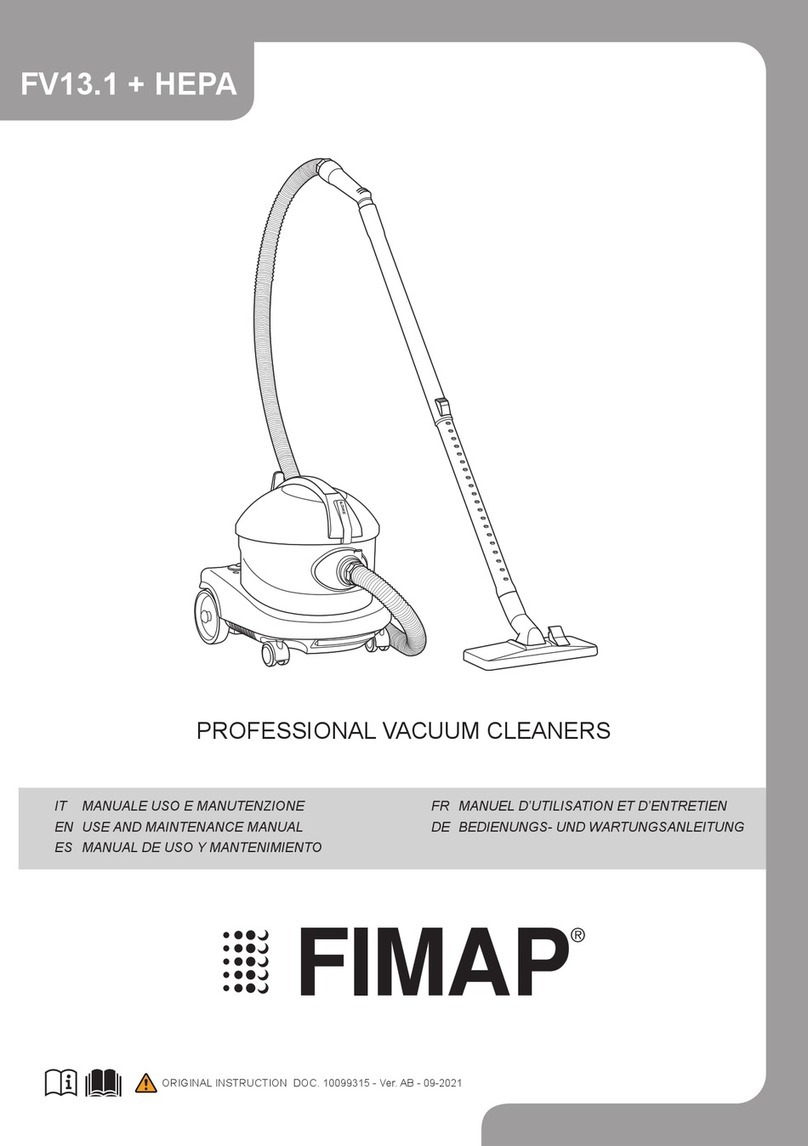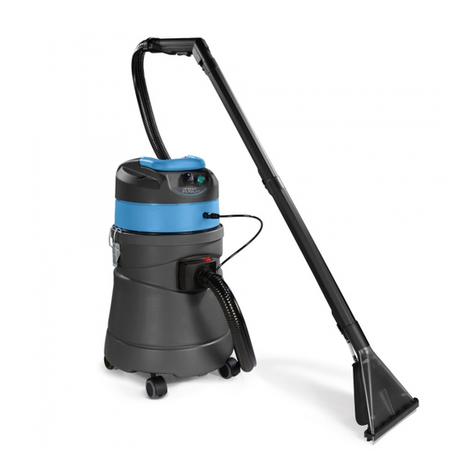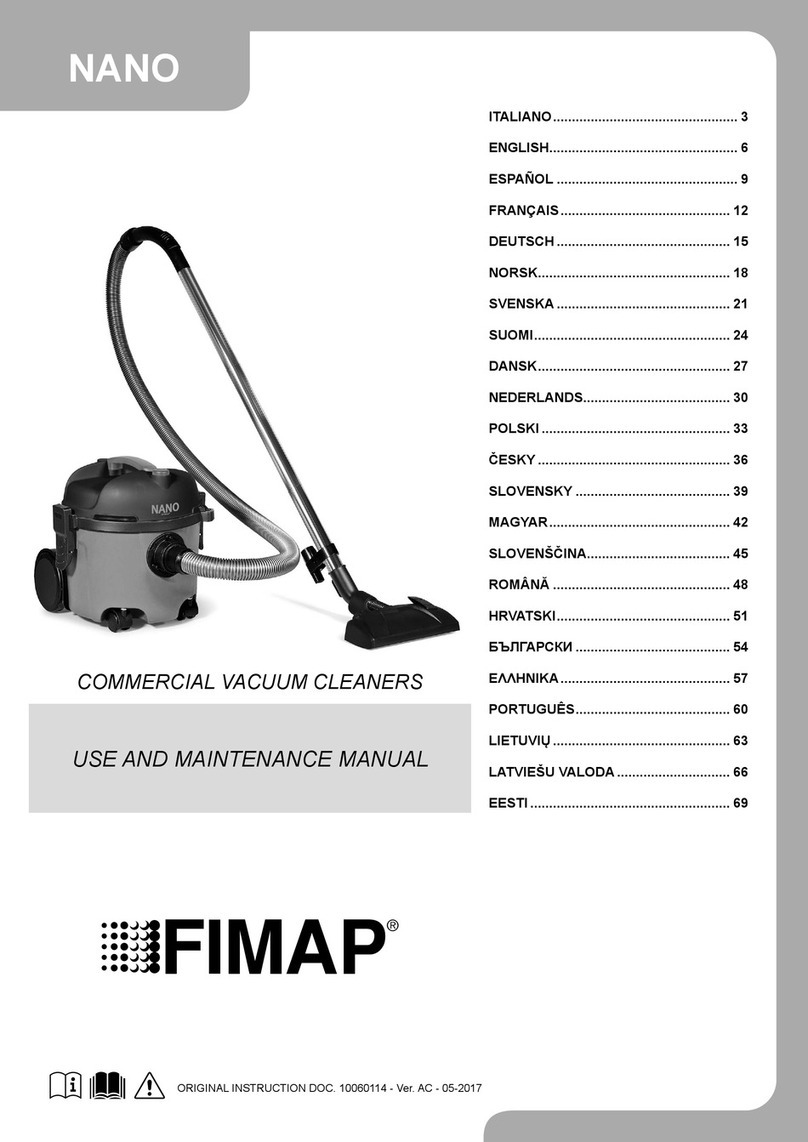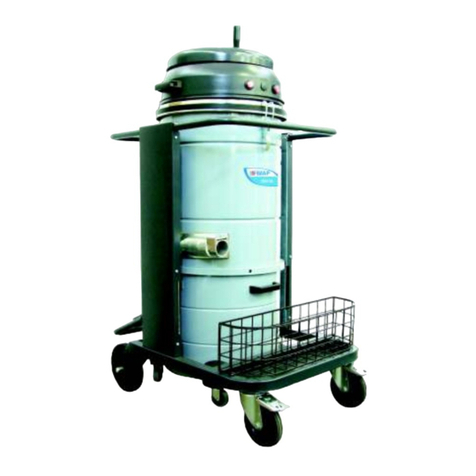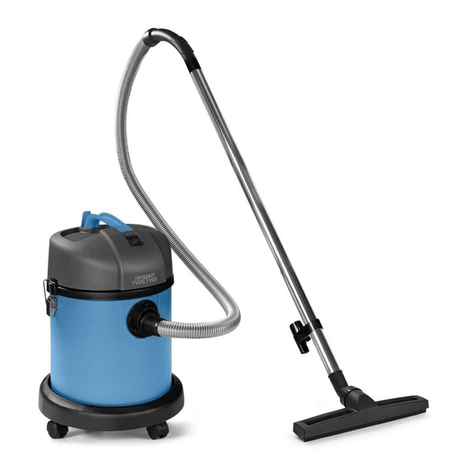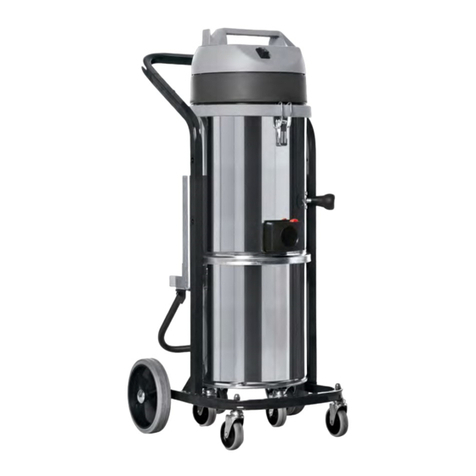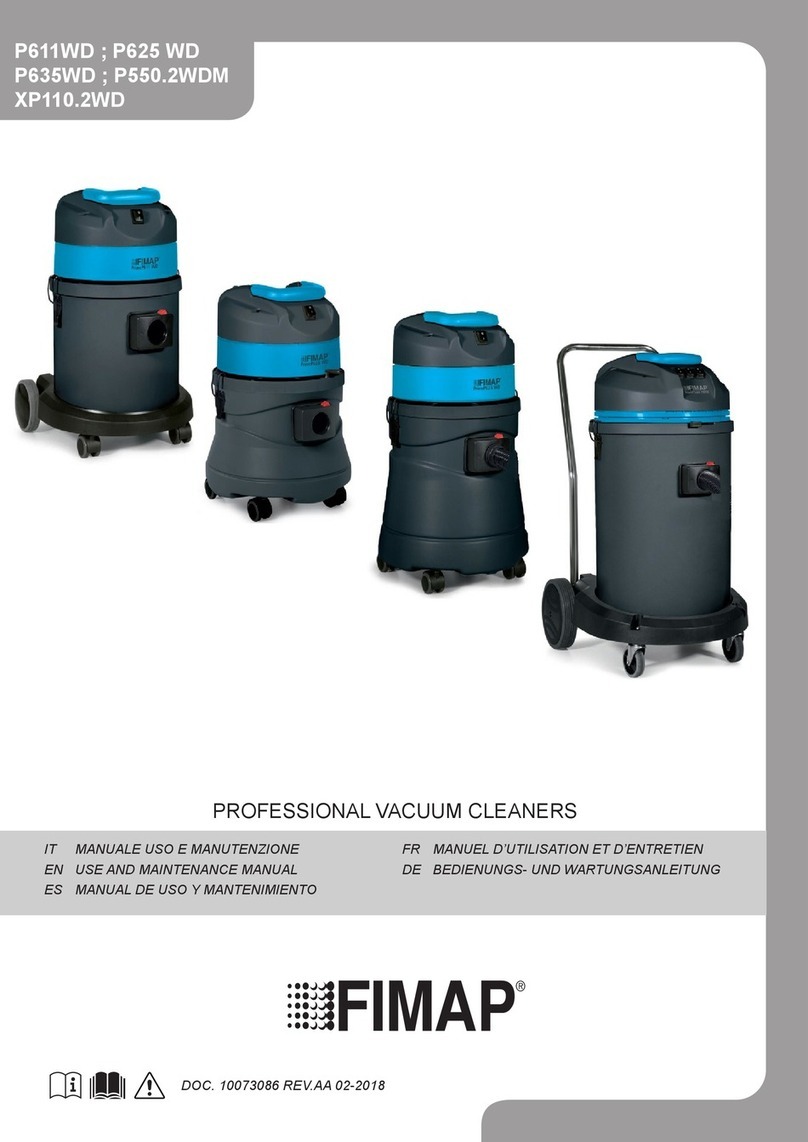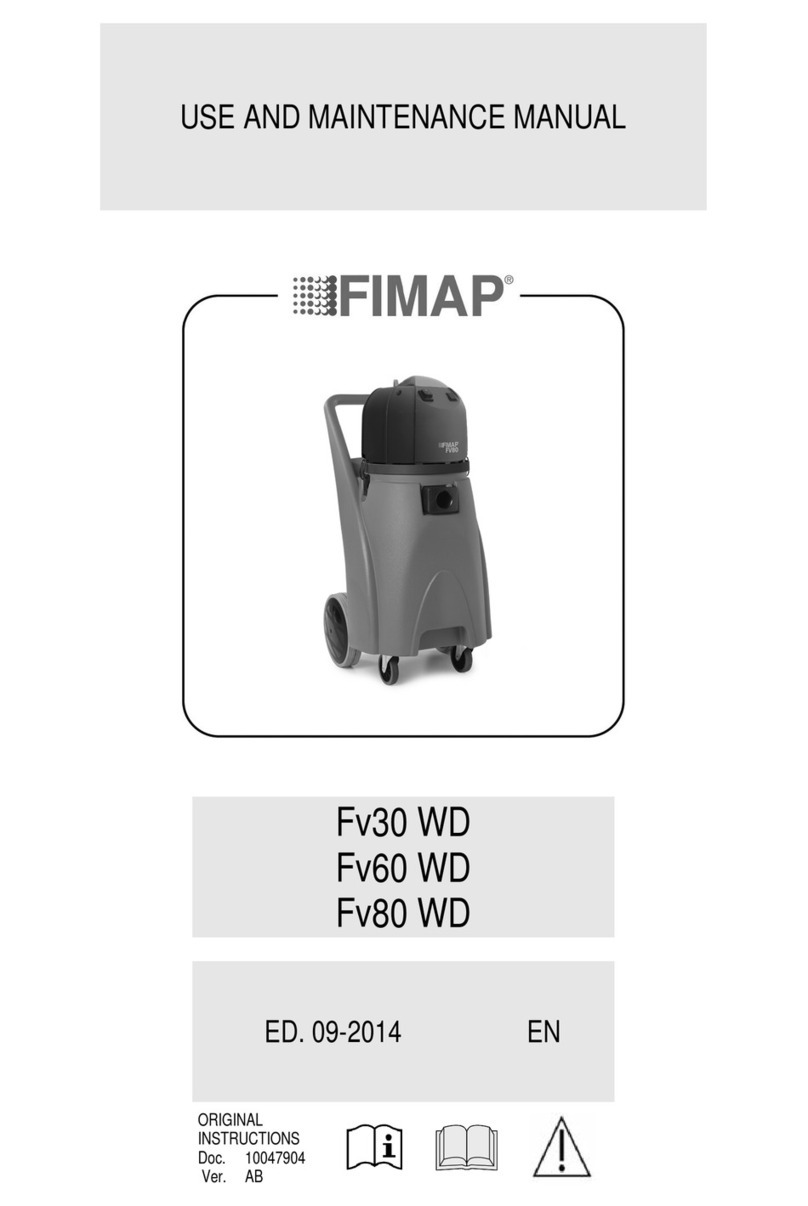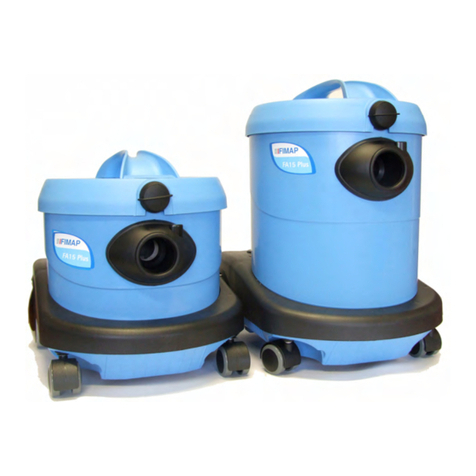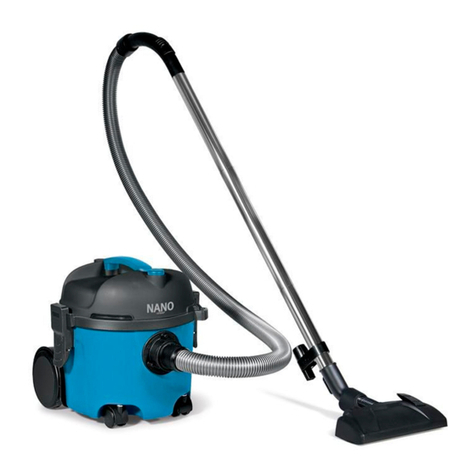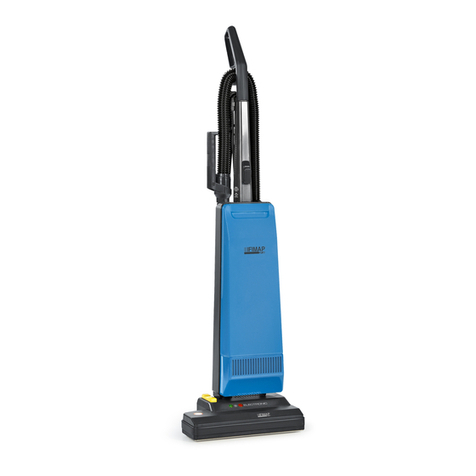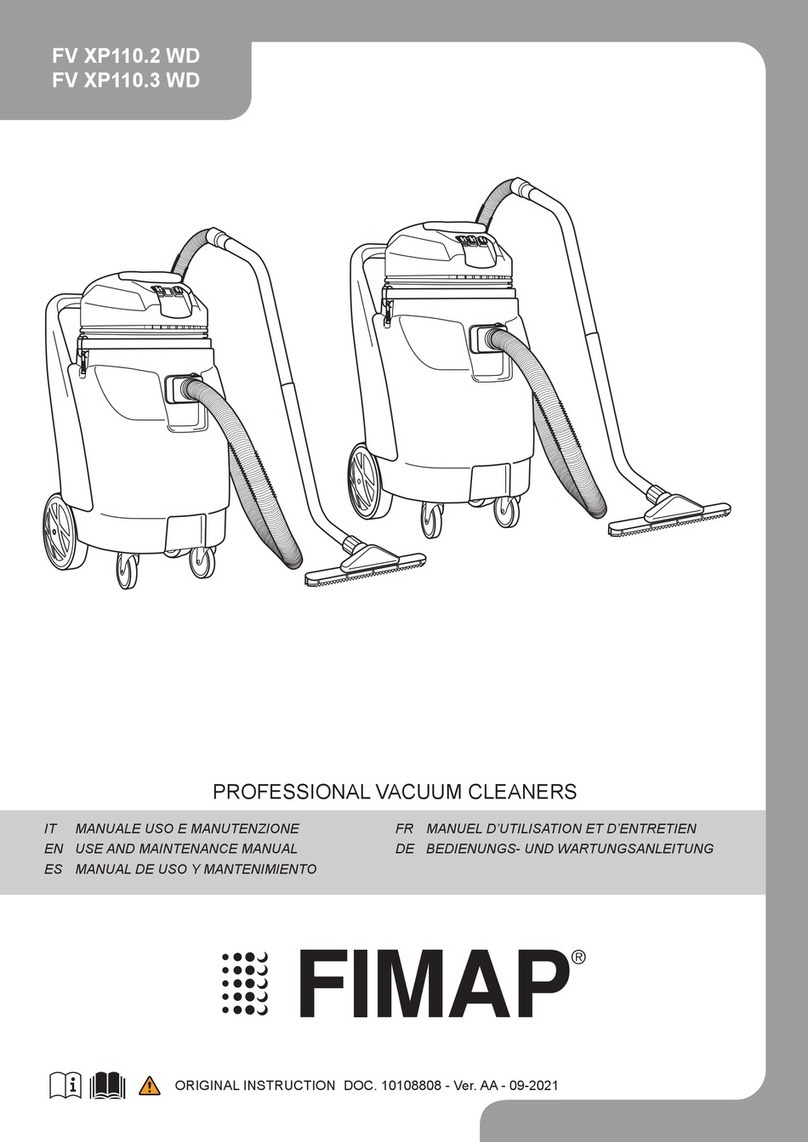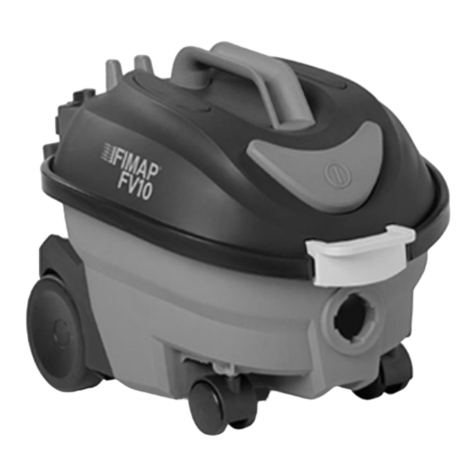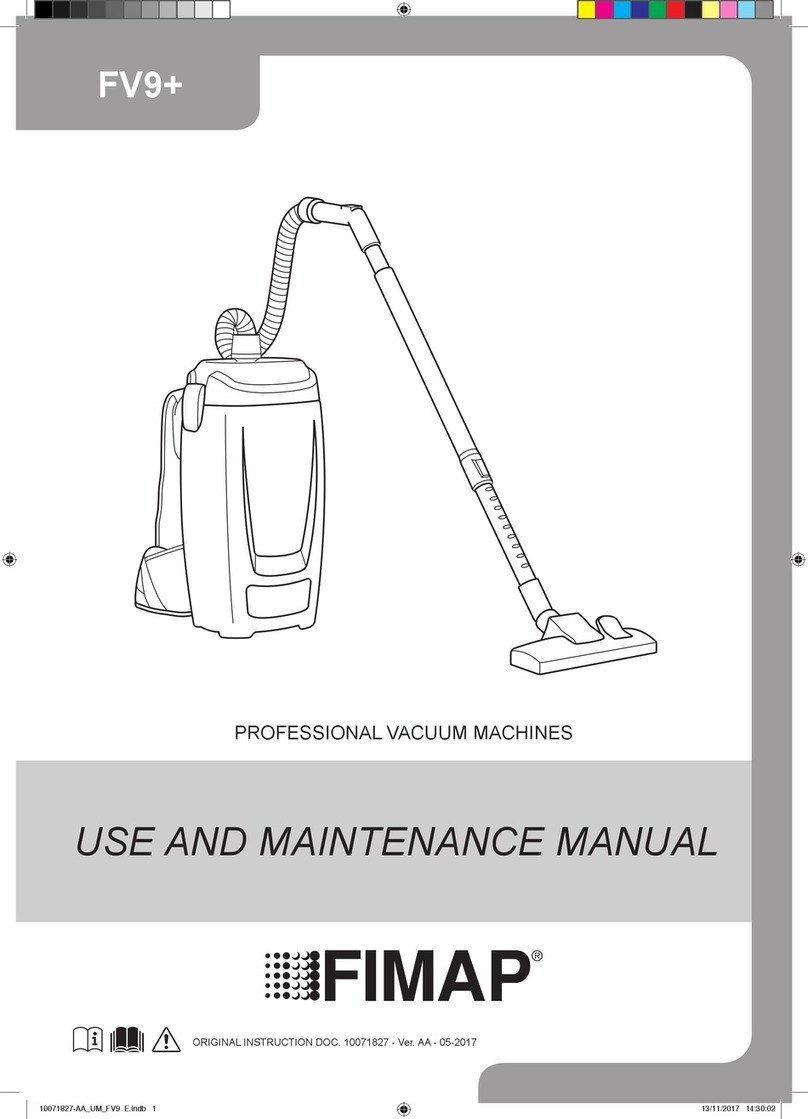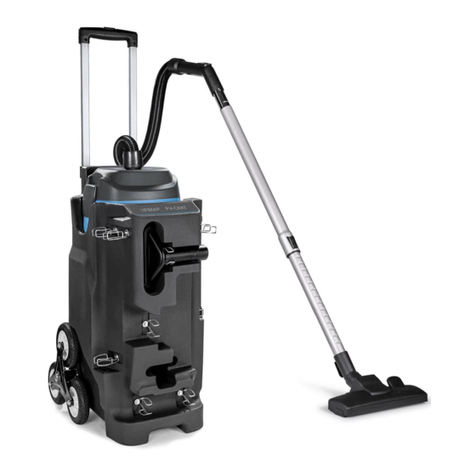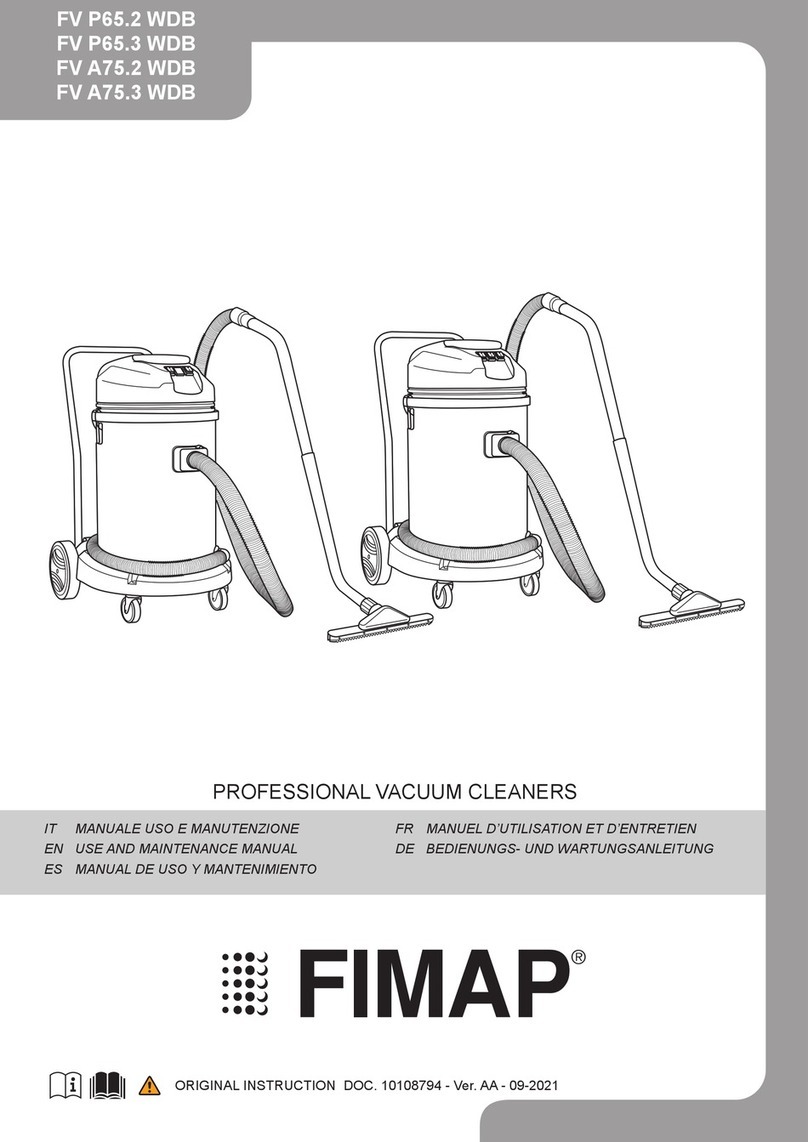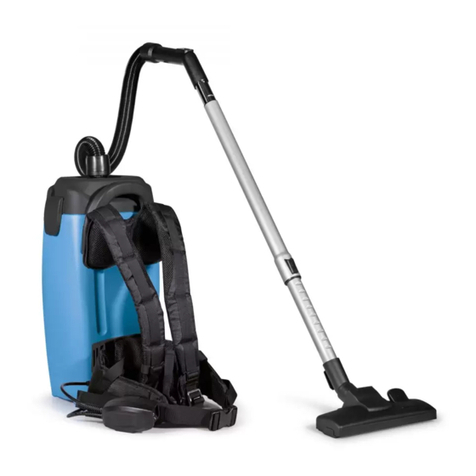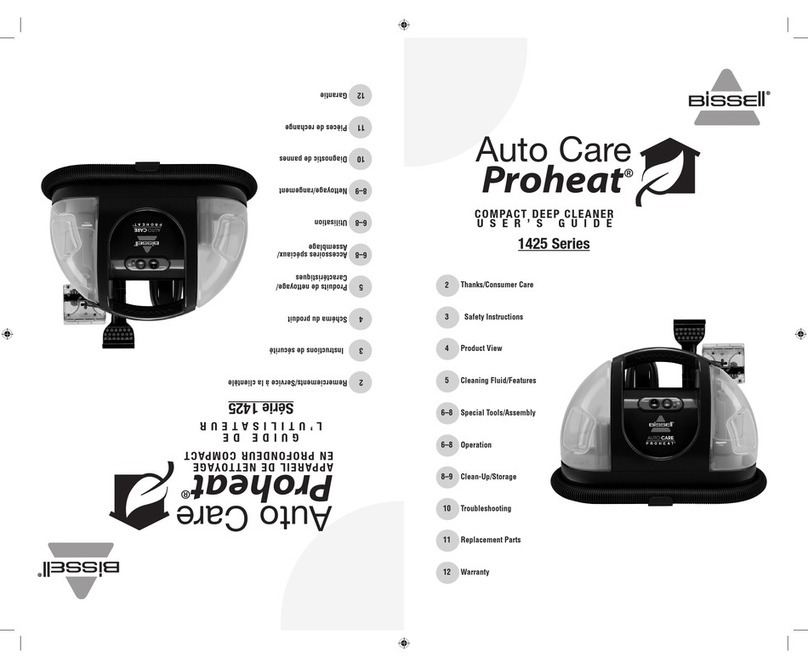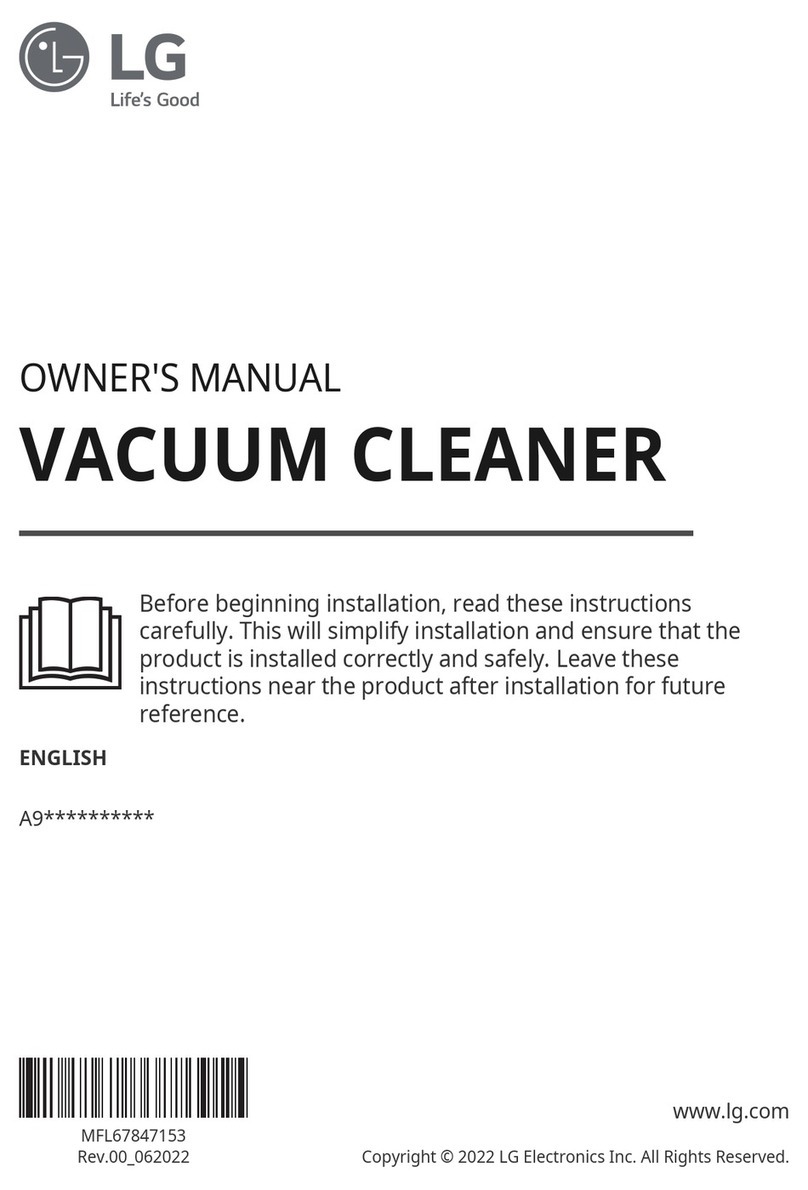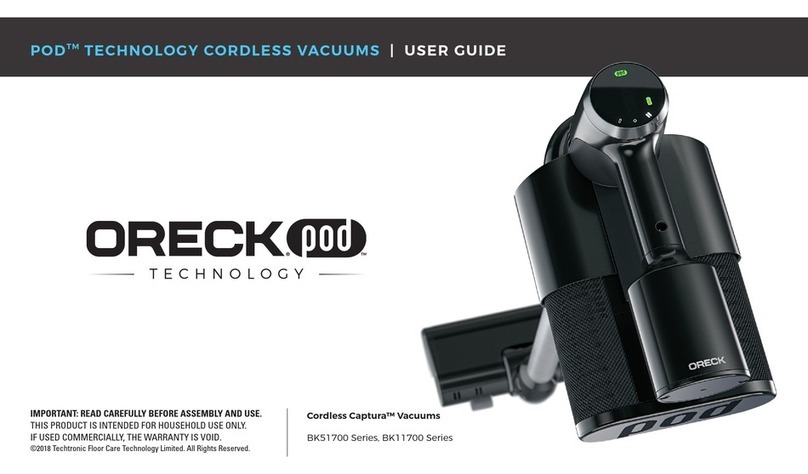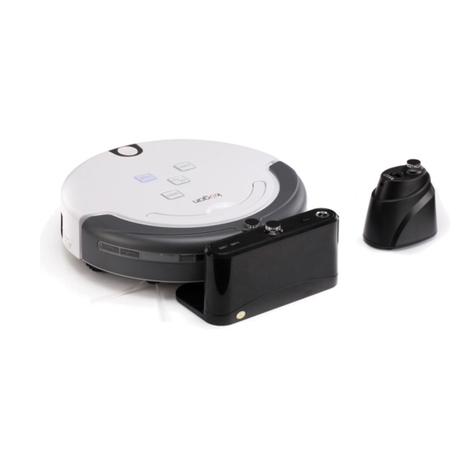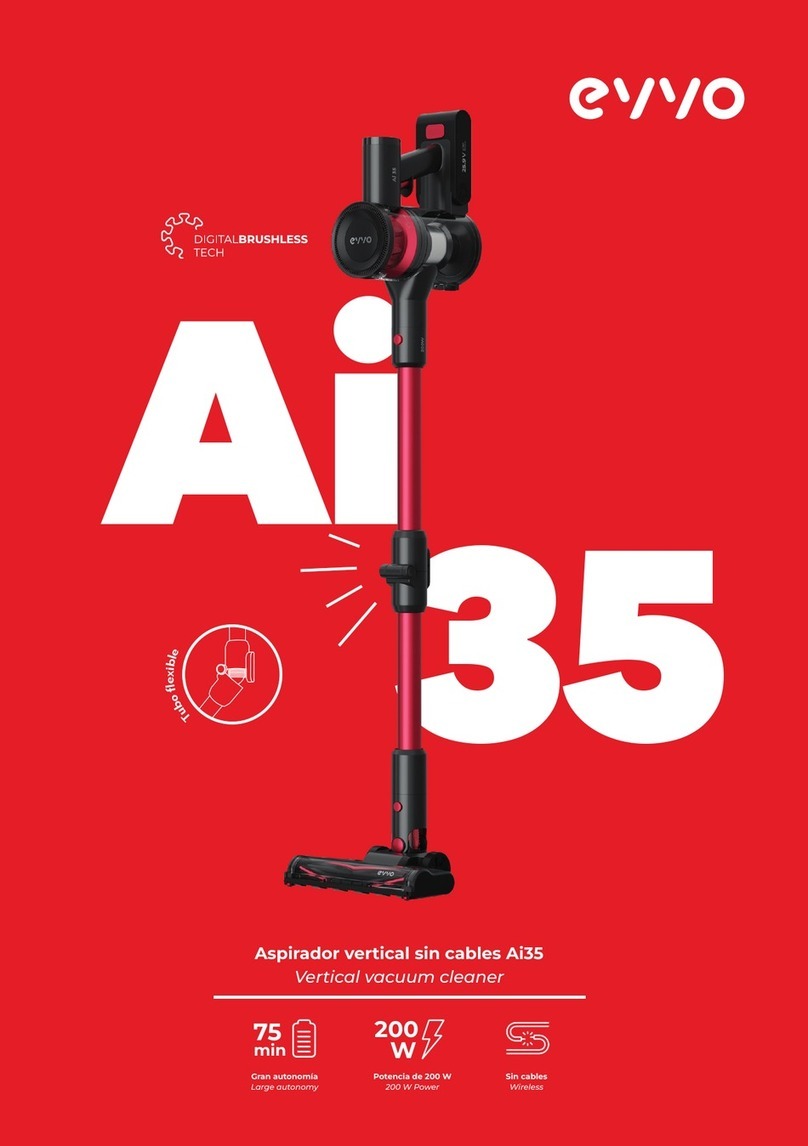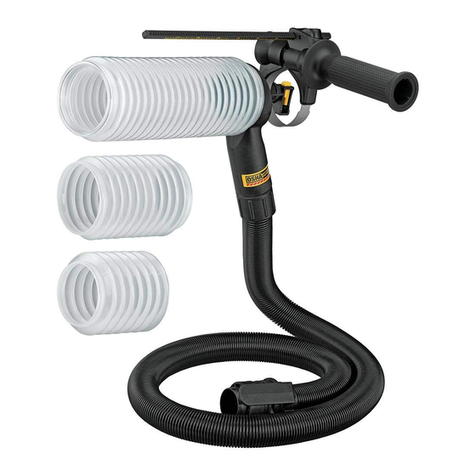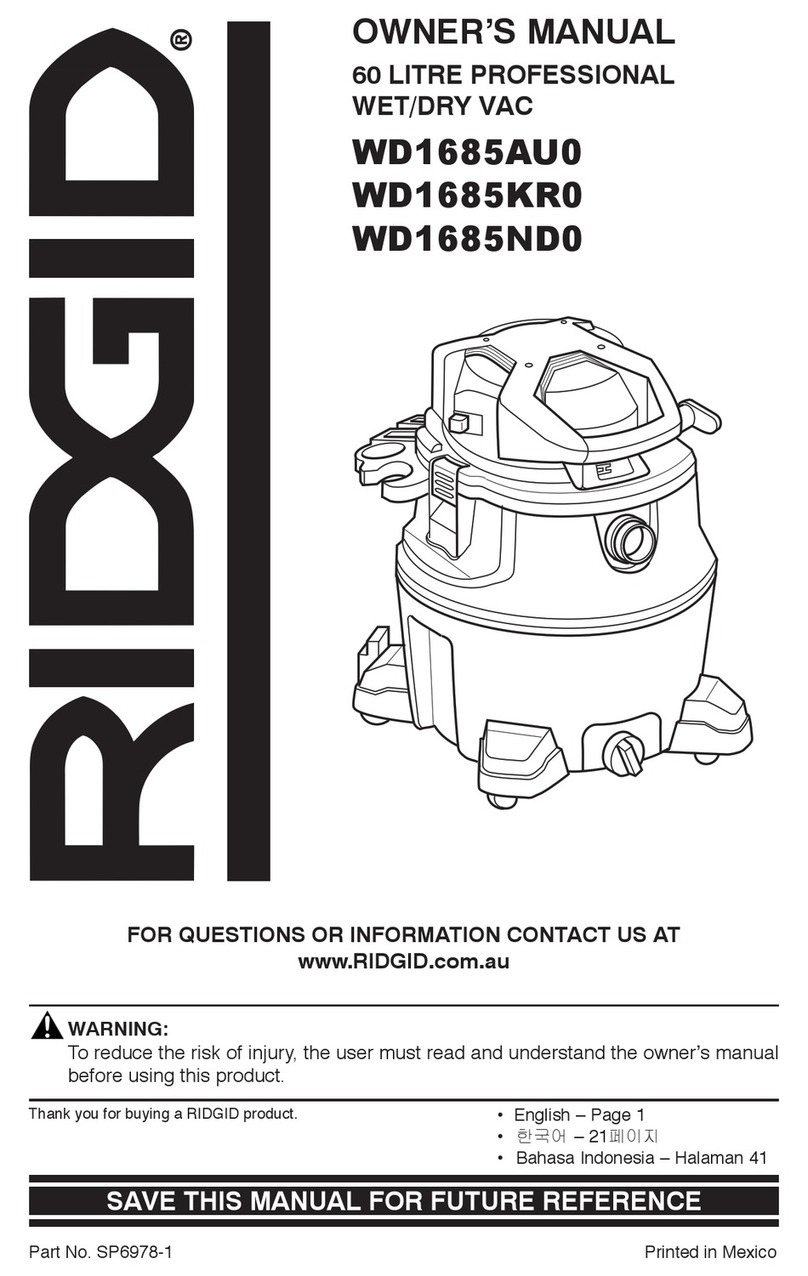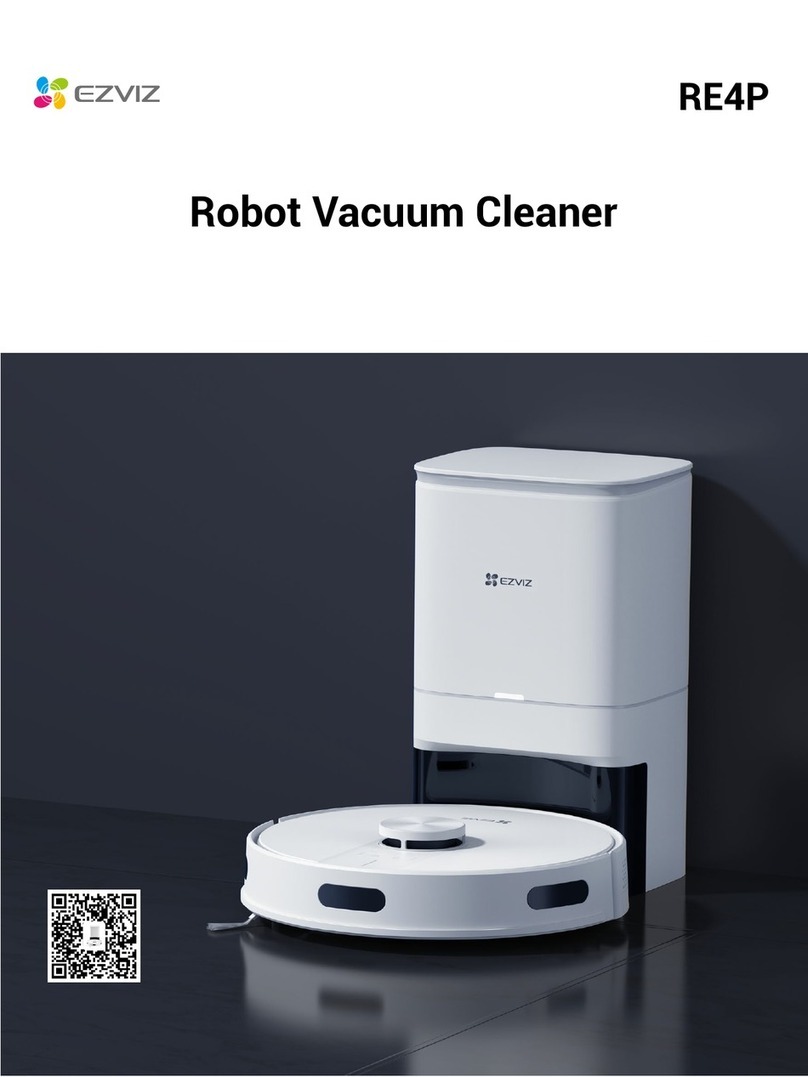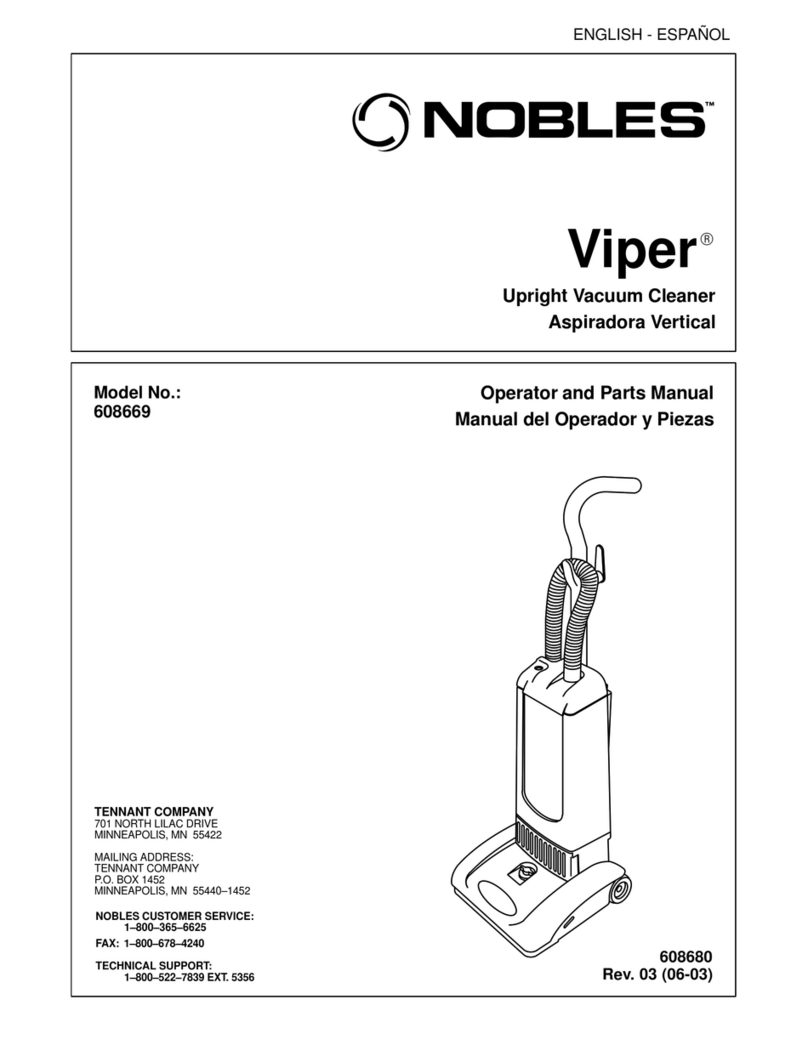MAINTENANCE
1. Make sure the main switch is in the "0" position; if it isn't, press
the button (Fig. 12).
2. Remove the vacuum nozzle from the lid by rotating it anti-
clockwise (Arrow B in Fig. 13).
3. Remove the lid (1) from the vacuum tank by releasing the hooks
on the sides of the tank itself (Arrow A in Fig. 14).
4. If necessary, replace the collection bag (3) (Arrow A in Fig. 15).
5. Remove the fabric lter (2) from the appliance (Arrow A in Fig.
16)and clean it with neutral detergent and warm water (attention:
wait for it to dry before putting it back in the appliance).
6. Place the lid (1) on the vacuum tank (Arrow B in Fig. 14) and
x it in place by means of the hooks on the sides of tank itself.
7. Remove the vacuum motor support (9) from the appliance by
releasing the hooks on the sides of the tank itself (Arrow B in
Fig. 17).
8. Remove the vacuum motor lter (10) from the appliance (Arrow
A in Fig. 18)and clean it with neutral detergent and warm water
(attention: wait for it to dry before putting it back in the appliance).
9. Place the vacuum motor support (9) below the vacuum tank and
x it in place by means of the hooks on the sides of tank itself
(Arrow A in Fig. 17).
10. Remove the protection grille (11) from the front of the tank (Arrow
A in Fig. 19).
11. Remove the exhaust air lter (12) from the appliance and clean
it with neutral detergent and warm water (attention: wait for it to
dry before putting it back in the appliance).
Place the protection grille on the front of the appliance and push it to
x it to the tank (Arrow B in Fig. 19).
TROUBLESHOOTING
Iftheappliancedoesnotswitchon,proceedasfollows:
1. Place the main switch on “I”.
2. Check the plug on the power cable of the appliance has been
well inserted in the mains socket. If it hasn't, connect it properly.
3. Make sure that the electrical specications of the appliance
correspond to the electrical specications of the power supply
network, check the technical information on the serial number
plate.
If dust emerges while you are using the appliance, check the
following:
1. Check the vacuum hose is properly connected to the nozzle on
the collection tank lid (if it isn't, insert it correctly).
2. Check that the vacuum hose is connected properly to the
accessory that is being used, if it is disconnected, connect it
Ifthevacuumcapacityisinsufcient,proceedasfollows:
1. Check the vacuum hose is properly connected to the nozzle on
the collection tank lid (if it isn't, insert it correctly).
2. Check that the vacuum hose is connected properly to the
accessory that is being used, if it is disconnected, connect it
correctly.
3. Check that there is nothing obstructing the vacuum hose, if there
is, remove it.
4. Check that there is nothing obstructing the vacuum chamber of
the accessory being used, if there is, remove it.
5. Make sure the collection bag isn't full (replace it if necessary).
THE APPLIANCE DOES NOT SWITCH ON
DUST COMING OUT DURING VACUUMING
THE VACUUM CAPACITY IS INSUFFICIENT
4. Make sure the power cable isn't damaged. If it isn't in perfect
condition, do not use the appliance and contact an authorised
assistance centre immediately.
correctly.
3. Make sure the collection bag isn't full (replace it if necessary).
4. Check the collection bag is correctly positioned.
5. Check that the collection tank lid is properly positioned.
6. Makesurethefabriclterisn'tdirtyordamaged(cleanorreplace
it as necessary).
7. Makesurethevacuummotorlterisn'tdirtyordamaged(cleanor
replace it as necessary).
8. Makesuretheexhaustairlterisn'tdirtyordamaged(cleanor
replace it as necessary).
9. Check that the collection tank lid is properly positioned.
12
17 18 19
14 15
A
A
A
A
A
B
B
B
B
B
1 3
12
11
16
A B
2
9 10
13
B
A
